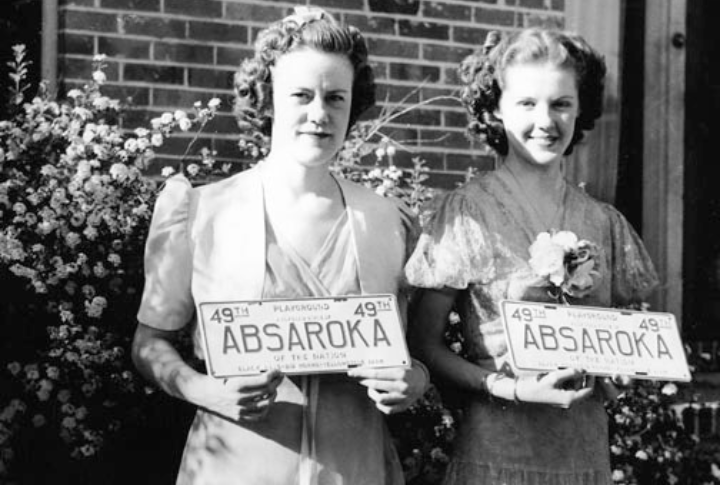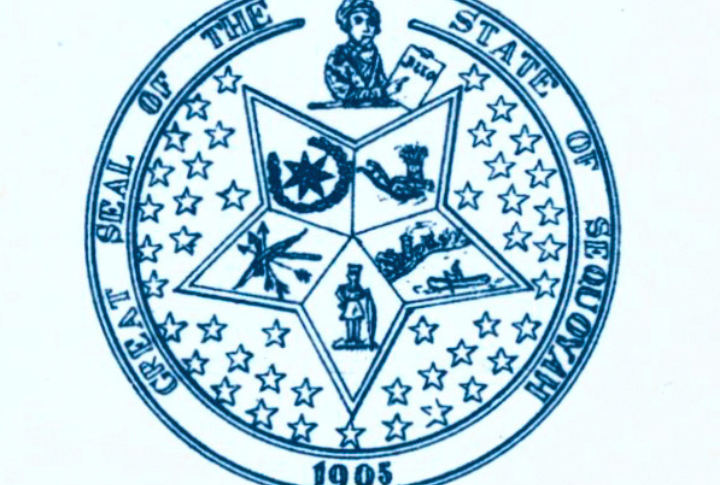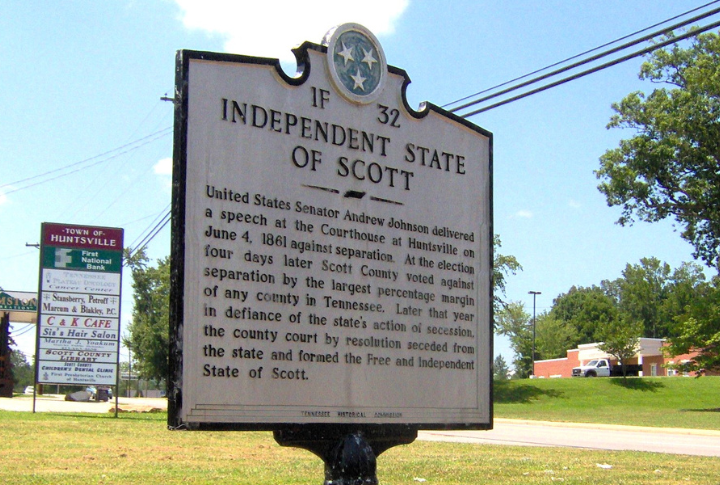Education
The Quiet Genius Behind The School Rules We All Questioned

Some school rules from the past may have seemed strict or unnecessary at the time, but many had solid reasons behind them. They shaped safer, more focused classrooms in ways we didn’t always see back then. Take a look back at the 10 rules that actually made sense and see how many you remember. You might be surprised.
No Talking During Lunch

Though unpopular at the time, lunchroom silence served a clear purpose. With limited adult supervision, lower noise levels allowed staff to spot problems like choking or bullying. During the pandemic, some schools even reinstated the rule. Quiet lunches were a safety measure and not just about control.
Walking In Single Lines

Lining up in single file kept transitions smooth and students safe. It minimized hallway collisions and gave teachers an easy way to move groups between classes. The approach originated in 19th-century discipline models and remains standard during emergencies like fire drills, proving that the structure works.
No Gum Allowed

Desks littered with dried gum became a constant frustration in the 1970s. Sticky residue damaged surfaces and made cleanup harder for janitors. Although newer research links gum to improved focus, the ban made sense in classrooms where cleanliness and shared space mattered most.
Dress Code Bans On Jeans

In past decades, jeans symbolized rebellion and even gang culture, prompting schools to impose bans. Educators wanted to create a learning-focused atmosphere and reduce disruption. In time, khakis replaced denim as a more acceptable alternative.
Mandatory Handwriting Classes

There was a time when neat handwriting shaped every school day—notes, tests, even how students expressed themselves. Cursive wasn’t just about letters; it taught focus and pride. Now, some states, for example, California and Kentucky, are bringing it back, hoping to revive a skill that once defined classroom life.
Silent Reading Periods

Few realized that quiet reading time could raise test scores. Known in some schools as “DEAR” (Drop Everything and Read), it reinforced focus and reading stamina. First introduced in the 1960s, this daily routine also gave students a moment of calm in busy classrooms.
Assigned Seating In Classrooms

Seating charts reduced off-task behavior and made it easier for teachers to track attendance. They also allowed educators to separate frequent talkers and create more balanced environments. For shy or anxious students, knowing where to sit each day offered comfort and predictability.
No Talking Unless Called On

Few classroom rules caused more frustration, yet the purpose was clear. Limiting speaking time ensured fairness and reduced constant interruptions. Dating back to the one-room schoolhouse model, the practice kept attention on the lesson and gave teachers full control of the room dynamic.
Standing For The Pledge Of Allegiance

The Pledge was introduced in 1892 to build a sense of unity among students. Its wording changed during the Cold War, adding “under God” to reflect national values. While still debated today, many schools continue the ritual as a way to honor civic tradition.
Hall Passes Required At All Times

Tracking students during class time wasn’t just administrative. It also prevented disruptions and cut down on wandering. Hall passes formalized movement and made teachers more aware of where students were. Some schools later replaced paper slips with digital systems, but the goal remained the same: structure.
Education
10 Proposed US States That Almost Became A Reality

Over the years, groups of settlers, rebels, and visionaries pushed for statehood, hoping to carve out their own place in the nation. Some movements gained traction, while others fizzled out as bold but short-lived experiments. Each attempt tells a story of ambition, conflict, and changing borders. Here are ten proposed states that came surprisingly close to becoming reality.
Franklin

It wasn’t a lack of ambition that brought Franklin down—it was debt. In 1784, Appalachian settlers declared independence, hoping to break free from North Carolina’s neglect. However, without federal recognition and plagued by financial troubles, the experiment quickly fell apart. By 1789, Franklin’s leaders were back under North Carolina’s rule, and the dream of independence faded into history.
Deseret

Deseret was conceived in 1849 as a vast state by Mormon settlers and hoped to span much of the American West. Congress, worried about excessive control, denied the proposal. Instead, Utah Territory was formed, drastically shrinking the dream. Still, the term Deseret persists in Utah’s culture and economy.
Absaroka

Absaroka was defined by its rebellious spirit. During the Great Depression, frustrated ranchers in Wyoming, Montana, and South Dakota declared themselves independent states, even minting license plates and holding beauty pageants. However, it was all more of a playful protest than a real movement, and by 1941, Absaroka faded into history.
Jefferson

Jefferson just wouldn’t give up. From the Rockies to northern California, this proposed state has kept reappearing throughout history. Its most famous moment came in 1941 when residents declared independence and raised flags, but World War II quickly snuffed out the movement. Despite that, the dream of Jefferson still lingers in the hearts of some.
Sequoyah

What if Native Americans had their own state? In 1905, the Five Civilized Tribes proposed Sequoyah, a state designed to preserve their culture and governance. With a detailed constitution that gained local support, it seemed promising, but it ultimately failed in Congress. Today, Sequoyah stands as a powerful reminder of autonomy lost to federal expansionism.
Westsylvania

In 1776, settlers west of the Alleghenies sought independence from Pennsylvania and Virginia, calling for Westsylvania. Congress ignored their pleas, choosing unity over fragmentation during the Revolutionary War. The name faded, but the rugged individualism of its founders lives on in regional pride.
Superior

Michigan’s Upper Peninsula often felt like an outsider. Residents proposed the State of Superior multiple times by citing cultural and economic differences. Although the movement never gained traction, the U.P. continues to embrace its distinct identity, with “Superior” as a symbol of regional pride.
Transylvania

Can private investors truly create a state on land that isn’t theirs? In 1775, investors bought Cherokee land to form Transylvania, only to have Virginia and North Carolina declare the deal illegal. Transylvania vanished and served as a cautionary tale about the risks of private ventures in public land disputes.
Delmarva

The Delmarva Peninsula, shared by Delaware, Maryland, and Virginia, often sought independence as its own state. Geographic isolation and cultural unity fueled these efforts. However, disagreements among the three states derailed each attempt. That left Delmarva’s statehood simply a footnote in US history.
Scott

In 1861, Scott County, Tennessee, boldly declared itself the Free State of Scott, which clearly defied Tennessee’s support of the Confederacy. While mostly symbolic, this stance remained until 1986. The county’s long legacy of resistance continues to intrigue people today.
Education
10 Secrets Mars Could Reveal If We Went Below Its Surface

Mars has intrigued scientists for decades, and while we’ve learned a great deal from its surface, the mysteries beneath could reveal even more. What if drilling into the Red Planet could expose ancient waters, hidden resources, or even clues to extraterrestrial life? Hold on to your curiosity as we explore ten extraordinary secrets that could change the way we think about Mars and its potential to support life—or even humanity itself.
Ancient Water Traces Beneath Mars

Mars might have once been a watery world. Hidden beneath its surface, scientists have found signs of ancient river channels and minerals that form only in the presence of water. There’s a chance we could uncover remnants of liquid water that reveal a time when Mars had an environment similar to Earth’s.
Unexplored Lava Tubes That May Harbor Life

Deep below Mars’ surface, lava tubes stretch for miles, created by past volcanic eruptions. These caverns could have shielded life from deadly radiation. In 2020, NASA proposed drilling into such tubes to study if microbial life could have found shelter. Could these underground worlds be home to creatures we’ve yet to discover?
Subsurface Magnetic Fields On Mars

Localized magnetic anomalies hint at something unique buried beneath the surface. Unlike Earth, Mars doesn’t have a global magnetic field, yet certain regions show magnetic signatures. The remnants of ancient magnetic shields could be uncovered during the process and can hint at how Mars once interacted with the solar wind and possibly protected ancient life.
Buried Martian Fossils And Past Ecosystems

Mars might have hosted ecosystems long ago, and it’s possible that microbial fossils are buried beneath its surface. With the right technology, borehole exploration could unearth traces of these life forms, offering a direct link to Mars’ past—and maybe even proof that life existed there.
Potential Martian Ice Deposits

The ice beneath the Martian surface might not be as frozen as we think. Subsurface ice could be more abundant than previously imagined, and exploring these icy layers might uncover vast water reserves. These hidden glaciers could play a critical role in future Mars missions, providing not only water but also oxygen and fuel for explorers.
Hidden Martian Volcanoes Still Active

Did you know that Mars hosts Olympus Mons, the largest volcano in the solar system? Beneath its surface, more could be waiting to be discovered during exploration. Volcanic activity on Mars isn’t as dormant as it seems—scientists believe some of these volcanoes may still be geothermally active.
Energy Resources Hidden In Mars’ Subsurface

Mars may contain geothermal energy beneath its surface, with heat pockets trapped in its crust. Exploring these depths could reveal energy-rich zones, presenting a potential power source for future human missions. Plus, these underground reserves could even fuel sustained exploration and make long-term habitation possible on Mars.
Potential For Microbial Life In Subsurface Water

Scientists suspect that water trapped beneath Mars’ surface may still harbor life—specifically microbial organisms. In 2021, research suggested that water deep underground could offer the right conditions for microbes to thrive. Tapping into Martian aquifers might expose long-buried microbial life and offer astrobiologists a game-changing breakthrough.
Martian Soil Composition And Mineral Riches

The Martian soil is more than just dusty red dirt. Mars is rich in iron and magnesium, but core sampling could reveal other valuable minerals such as sulfur and rare earth elements. These resources might be essential for future Mars colonies or scientific breakthroughs, and they’re lying dormant beneath the surface—waiting to be discovered.
Clues About Mars’ Tectonic Past

Mars may not have active plate tectonics; however, that doesn’t mean it was always still. Evidence from surface features like valleys and ridges suggests tectonic activity occurred billions of years ago. By drilling, we could access hidden layers that provide insight into Mars’ tectonic history, which might offer clues about how the planet’s interior evolved over time.
Education
10 Ancient Clues Found In Submerged Caves Of The Yucatán Peninsula In Mexico

Centuries-old secrets lie hidden beneath the waters of the Yucatán Peninsula. From tools crafted by ancient hands to haunting relics of Ice Age giants, the caves preserve an underworld long forgotten. Here are ten discoveries from those submerged caves that rewrite history.
Stone Tools Reveal The Ingenuity Of Ancient Settlers

Over 10,000 years old, these tools found in cenotes carry the marks of early craftsmanship. Flint blades and spearheads hint at survival tactics. Early humans used these artifacts to shape their existence in the Yucatán’s one-of-a-kind environment.
Fossilized Megafauna Reveal Human Coexistence

Deep underwater in Hoyo Negro, the remains of mammoths, giant sloths, and other extinct creatures were found alongside a 13,000-year-old human skeleton. These findings bring attention to the shared existence of early humans and megafauna during the Ice Age, offering a glimpse into their dynamics.
Human Skulls Point To Ceremonial Cave Ceremonies

Delicately placed skulls, some over 9,000 years old, suggest these caves were used for rituals. Many skulls were found intact, which raises questions about their purpose. Were they offerings to water deities or markers of significant events that need further revelations?
Ocher Mines Highlight Resourceful Pigment Extraction

Vivid red ocher was mined here 12,000 years ago, long before similar discoveries were made elsewhere. This mineral, prized for rituals and art, was painstakingly extracted in pitch-black conditions. In the Yucatán cenotes, this ancient mine is the oldest known source for extracting ocher.
Preserved Pottery Reflects Early Culinary Traditions

Pottery fragments hint at how food and water were stored by the Maya. Though direct evidence from submerged caves is scarce, the ceramics plausibly reflect ancient cooking practices and dietary habits. This is a glimpse into their daily lives thousands of years ago.
The Haunting Skeleton Of ‘Naia’ Rewrites History

Hoyo Negro’s underwater cave yielded Naia’s 13,000-year-old skeleton, one of the oldest to reveal genetic ties to modern Indigenous groups. Her DNA provided an essential link between the ancients and their descendants, giving them a rare glimpse into genetic evolution over thousands of years.
Submerged Temples Reveal Sacred Connections To Water

Altars and ceremonial structures found in cenotes demonstrate the Maya’s reverence for water as a life source. Cenotes were gateways to the underworld in their mythology. The discoveries paint a picture of how spiritual beliefs and natural landscapes existed as one.
Calcified Bones Preserve Ice Age Mysteries

Bones covered in thick calcium deposits create natural time capsules, preserving species lost to time. Found in caves like Dos Ojos, these remains reveal a window into the Ice Age’s biodiversity. Such preservation is unique to the mineral-rich waters of Yucatán.
Ancient Canoes Showcase Early Waterway Mastery

A wooden canoe, remarkably preserved, was found near Chichén Itzá. This vessel was used for rituals or trade and highlights the Maya’s navigation skills. The role of water in survival, trade, and culture in their society is evident in this example.
The ‘Eve Of Naharon’ Challenges Migration Theories

Unearthed near Tulum, Eve of Naharon’s remains date back 13,600 years. She is now among the earliest known inhabitants of the Americas. Her discovery challenges chronological assumptions that hint at even earlier waves of migration that shaped human history on the continent.
-

 States12 months ago
States12 months ago10 Places Hosting the Biggest Open-to-All New Year’s Celebrations
-

 Travel6 days ago
Travel6 days ago10 Remote Hideaways Scattered Across The Great Basin
-

 Education1 year ago
Education1 year ago15 Surprising Items You Can Borrow from the Library
-

 Cities2 months ago
Cities2 months ago15 US Cities Where You Can Live Car-Free with Ease
-

 States2 months ago
States2 months ago15 Secret Underground Tunnels Across the U.S.
-

 Florida8 months ago
Florida8 months ago10 Things That Make Sanibel Island One Of Florida’s Most Unique Getaways
-

 Health3 months ago
Health3 months ago10 Signs of Lewy Body Dementia Everyone Should Know
-

 Animals1 year ago
Animals1 year ago15 Dog Breeds That Excel In Cheering up Their Humans
